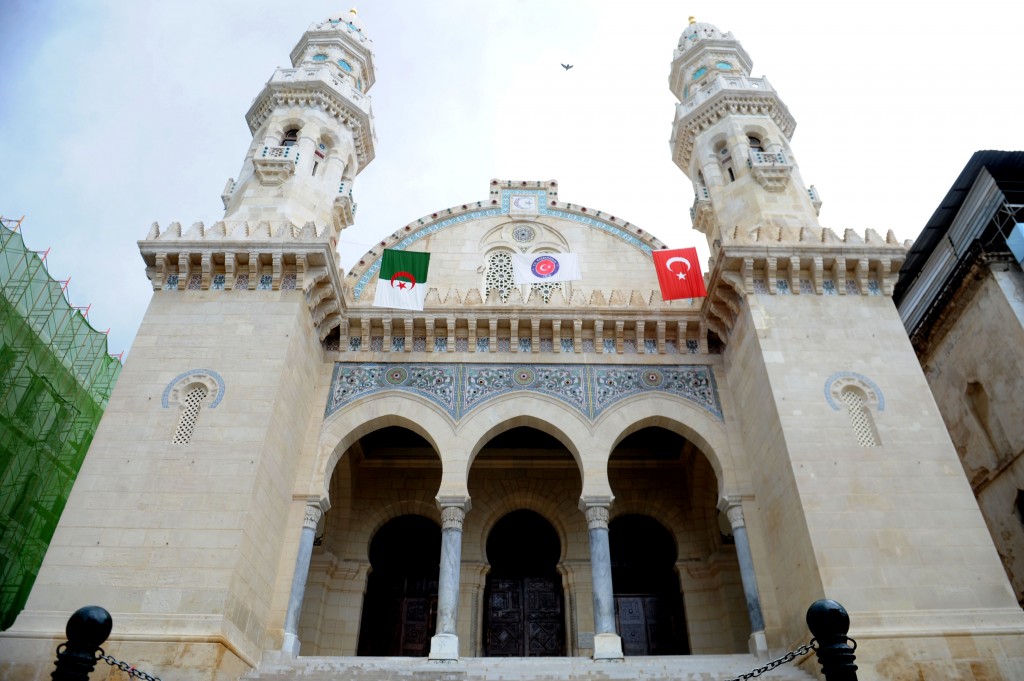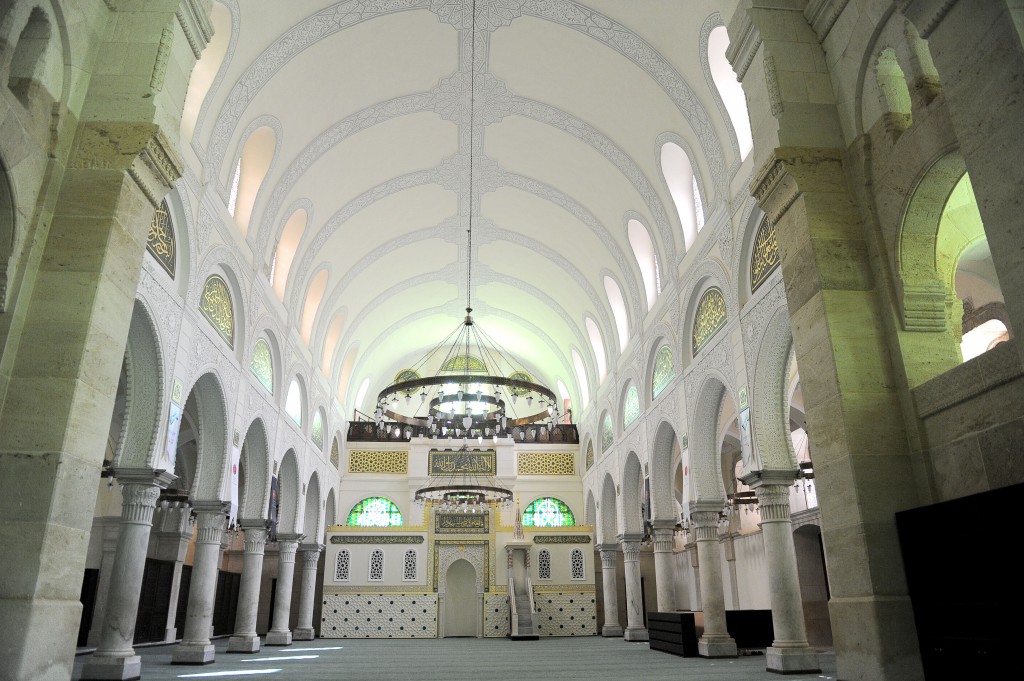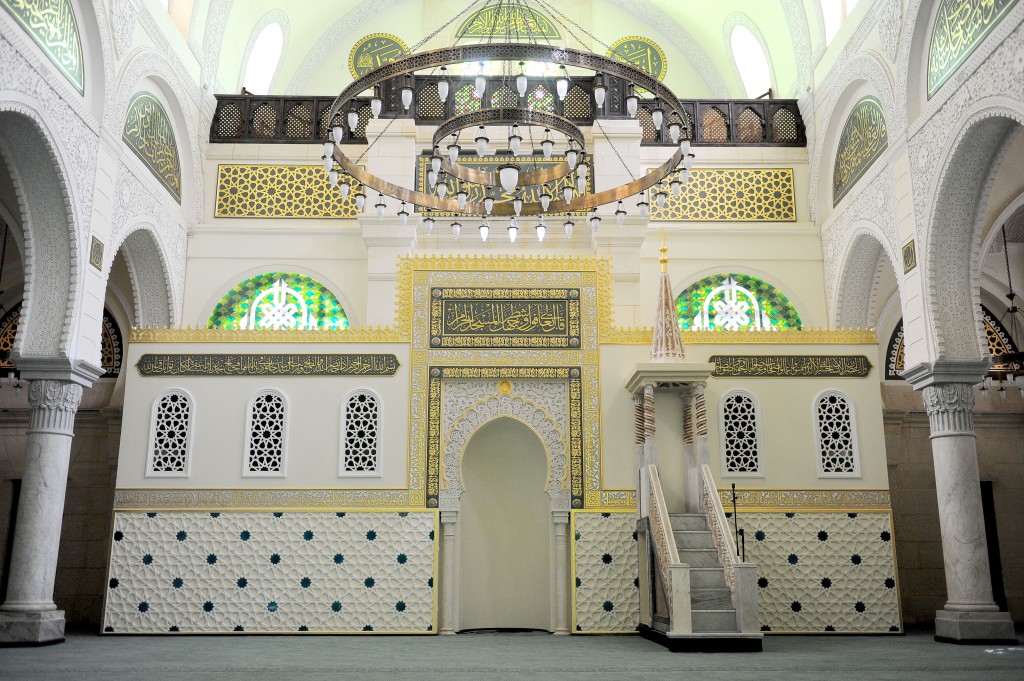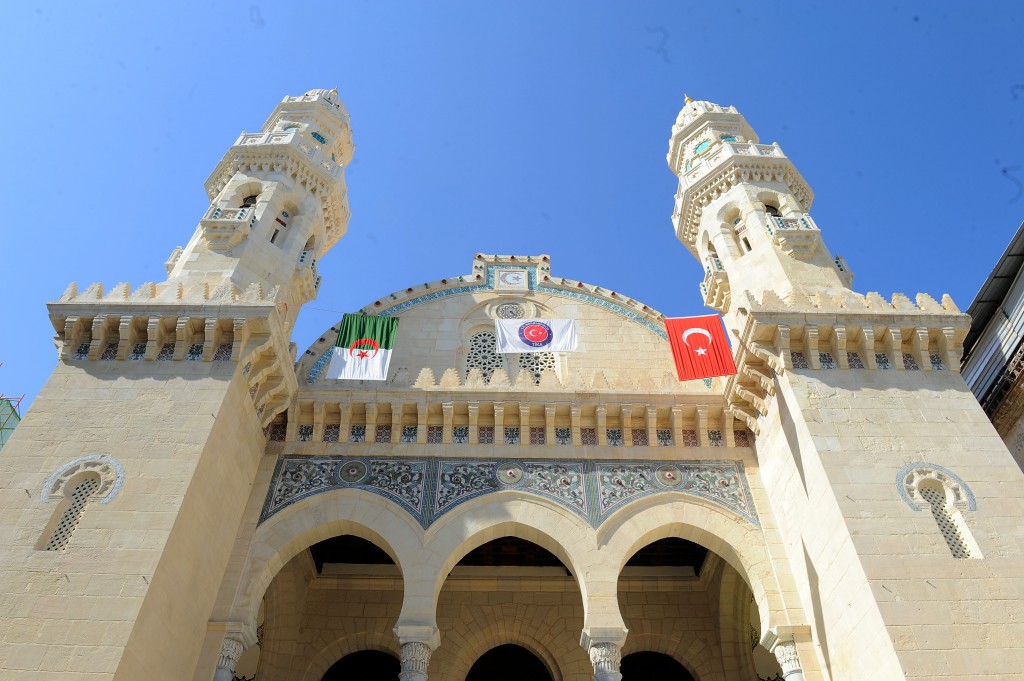News
27 January 2018The Restoration of the Ketchaoua Mosque is a Point of Pride for Turkey
One of the symbols for the 500-year old friendship between Turkey and Algeria and a monument of Algeria’s independence, the Ketchaoua Mosque was restored with the support from the Turkish Cooperation and Coordination Agency (TİKA), and it fascinated the experts of the United Nations Educational, Scientific and Cultural Organization (UNESCO).
The academics acting in an advisory capacity evaluated the repair and retrofit work at the Ketchaoua Mosque that was carried out with the support from TİKA, in Algeria’s capital, in the old part of the town that is known as Casbah, which was a major local administrative region during the Ottoman era and which is a UNESCO world heritage site today. During President Recep Tayyip Erdoğan’s visit to Algeria between June 4-5, 2013, after an agreement was reached between the two countries for Turkey to aid with the restoration of some historical monuments built during the Turco-Ottoman rule, the restoration of the Ketchaoua Mosque was started in 2014 and it was completed last year.
With the approval and participation of Algeria Ministry of Housing and Urban Development as well as Ministry of Religious Affairs and Wakfs, the repair and retrofit efforts were started by TİKA with consultation from a scientific team of academics from Turkey. Meanwhile, Algerian architects, archaeologists and engineers also supervised the project, which preserved the historical texture of the structure.
“The restoration of the Ketchaoua Mosque is a point of pride for Turkey”

One of the advisors for the restoration project, Yıldız Technical University (YTU) Faculty of Architecture, Architecture Department faculty member Prof. Dr. Nuran Kara Pilehvarian explained that the building was originally a 14th century mosque that was first expanded by Hayreddin Barbarossa, and also went through expansions and repairs in 1672 and during 1790s to assume its final form. After the French occupation of Algeria, the building was converted into a church in 1832 and served as a church between 1841-1842 reminded Pilehvarian, “Between the years 1840-1880, the French administration implemented many changes to convert the building into a church. Finally, the mosque, tomb area, and baths were demolished to construct the structure we see today.”
Pilehvarian stated that the building was used as a cathedral and continued, “In 1962, when Algeria declared its independence, in the cathedral, they built a mihrab wall, where the old mosque’s mihrab used to be and performed the first Friday prayer here. Thus, it became a symbol of Algeria’s independence. It served as a mosque until 2006. In 2006-2007, there were some static problems after the earthquake in Algeria. Due to a risk of collapse in the sections on the front that were added later and in the minarets, they closed it to worship.”
Pilehvarian pointed out that President Recep Tayyip Erdoğan offered to restore this structure as a sign of brotherhood during his visit to Algeria in 2013 and the two countries signed the necessary protocols in 2013 to carry out the restoration of the Ketchaoua mosque. She said the restoration started in 2014 after repair and retrofit projects were prepared and historical research was completed and added, “Thank God, we are at the end of this project. This project has satisfied the international criteria in terms of restoration and it has become a point of pride for Turkey.” – “UNESCO world heritage experts thanked for the restoration” An advisor to the mosque’s restoration, Yıldız Technical University Faculty of Architecture, Architecture Department Head of Faculty Prof. Dr. Can Binan shared his impressions on the meeting concerning Algeria’s Casbah region organized by Algeria Ministry of Culture, Governorate of Algiers and UNESCO World Heritage Office between January 21-23.
Binan said, “Although the meeting was to discuss the Casbah region, at the start of the meeting, Algeria’s Minister of Culture expressed his thanks for the restoration of the Ketchaoua Mosque, which the Republic of Turkey completed through the coordination of TİKA. He said during this project, the bilateral cooperation was maintained in a very successful manner. In addition, the directors from Algeria Ministry of Culture General Directorate of Cultural Heritage and Museums expressed their gratitude. They emphasized that as part of the restoration work carried out and completed by Turkey, over 30 Algerian architecture students were trained, which will allow them to take part in other restoration projects across Algeria in the future. This made us particularly proud.”
Binan stated that during the visits to Casbah region, UNESCO experts also arrived at the Ketchaoua Mosque and they were briefed about the scope of the restoration work that was being done, “Under the mosque, there was a special section where the remains of the old mosque, which was destroyed during the French occupation and during the colonial period, were on display. We informed the experts about this and about the scope, objective and background of the interventions we made. All UNESCO world heritage experts who visited have extended their appreciation. They were aware that these efforts were very comprehensive and difficult. They said that they knew how challenging this was and thanked us for how we managed to complete it.” Binan emphasized that it is a very proud accomplishment to receive recognition from UNESCO world heritage experts for the Ketchaoua Mosque restoration project, which was made possible by Turkey’s material, moral and intellectual resources.
Next News
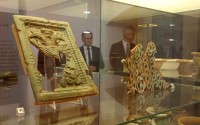
Support from TİKA to “Historical City of Osijek” Exhibition in Croatia
The Turkish Cooperation and Coordination Agency (TİKA) organized the “Historical City of Osijek” Exhibition in Eastern Croatia’s largest city Osijek, in cooperation with the Museum of Slavonia and the Ministry of Culture of Croatia. The...
